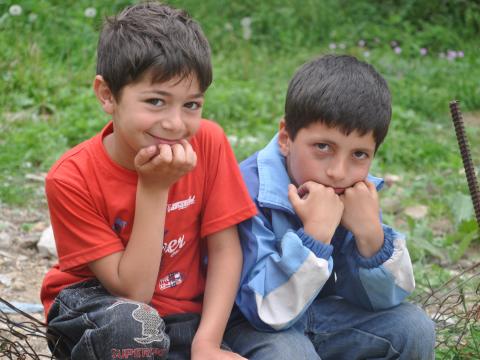Study reveals lack of pediatricians is hurting children

A shortage of pediatricians is hurting Armenian children, especially those living on the peripheries of the country, says a World Vision-funded study released during round-table discussions in Yerevan, Armenia initiated as part of World Vision’s Child Health Now campaign. According to the research, currently very few of the new graduates specialise in pediatrics and during the last five years no pediatrician was referred to any region of Armenia after graduation.
More alarming, the study reveals, every second child from the country’s rural areas who needs hospital care dies within 24 hours after hospitalisation due to various problems related to both human and physical resources.
The country’s rural areas have been medically underserved for decades, due to a sharp decline in the number of pediatric staff in Armenia and the fact that pediatric personnel are aging, which is particularly evident in the regions.
"The number of pediatricians and narrow pediatric specialists has been steadily decreasing since 1990. As of now, there are 694 practicing pediatricians and narrow pediatric specialists in Armenia compared to 2,000 personnel serving the sector back in 1990", said Sergey Sargsyan, the head of Child and Adolescent Health Institute.
Approximately 582,640 children, or 27 per cent of the child population, reside in areas greatly lacking pediatric resources, where the ratio of children to physician can reach 2,400 children per doctor. This persistent shortage of physicians in rural communities means that many communities struggle continuously to recruit and retain physicians.
"The medical human resource capacity has been a severe issue in Shirak region for a long time now; there are no personnel ready to take over the aging staff and we have 86-year-old doctors that still have to work. The government has to find ways to attract young professionals to the peripheries of the country and handle the discrepancies in the field", said Hovhannes Hovhannisyan, the head of Health and Social Welfare department of Shirak region.
Discrepancies result from the differences in the quality of healthcare services, distribution and capacity of medical human resources, clinics’ sanitary and physical conditions and availability of equipment at clinics. This problem is partly pronounced in the functionality of the emergency transportation system for neonatal and other pediatric cases, and its failure has a drastic impact on whether a child lives or dies.
The research suggests that the government has to create a comprehensive system to monitor a human resources strategy to replace doctors to meet children’s needs, as well as develop key determinants of training of pediatricians and their retention.
Healthcare officials and professionals from health sectors participated at the round-table and agreed to develop an action plan based on the needs in the pediatric sector. The Ministry of Education and Yerevan State Medical University will contribute to the whole process.